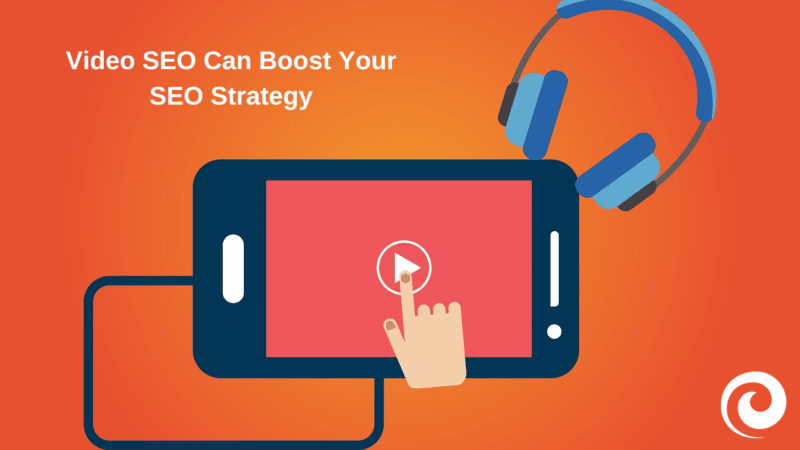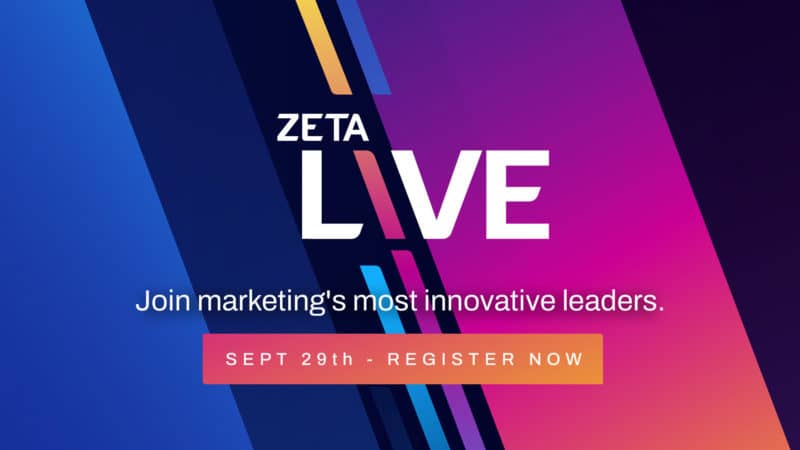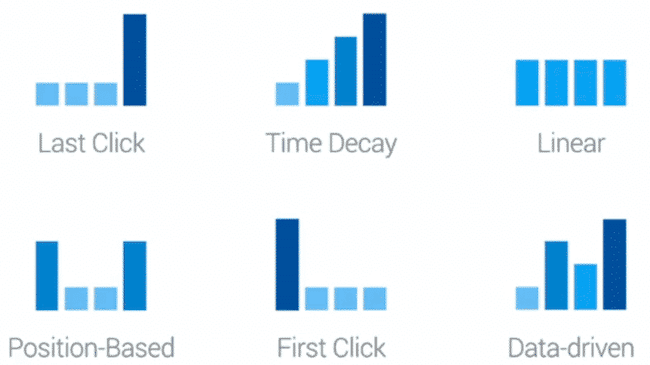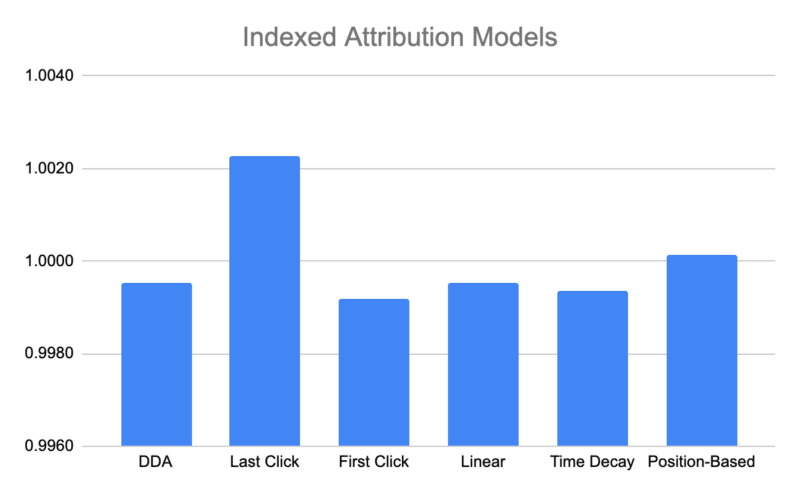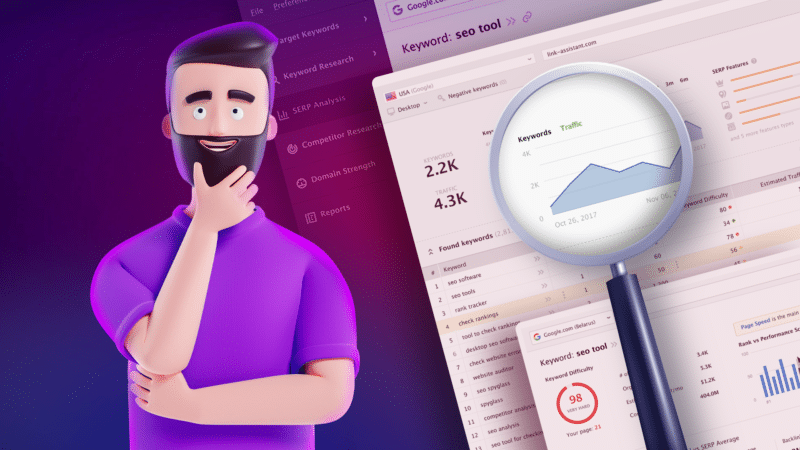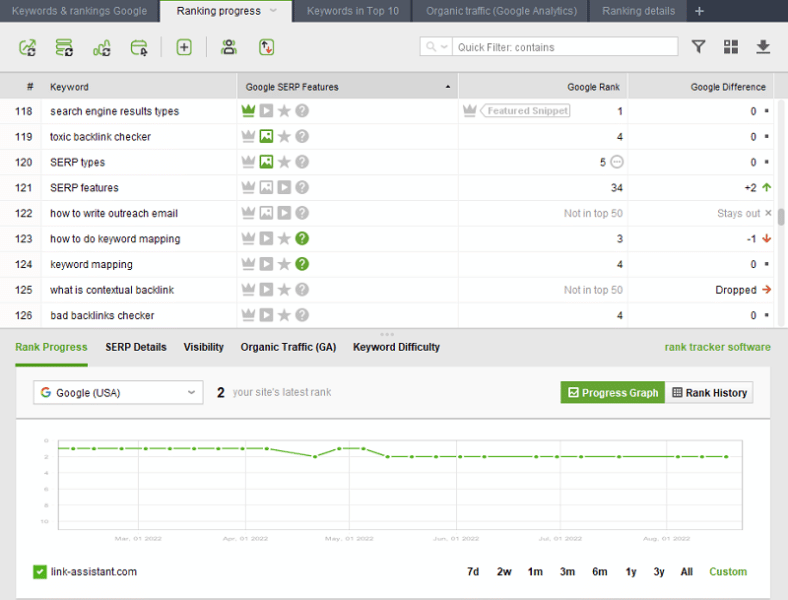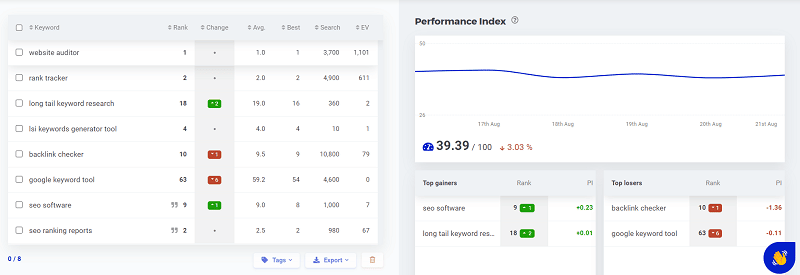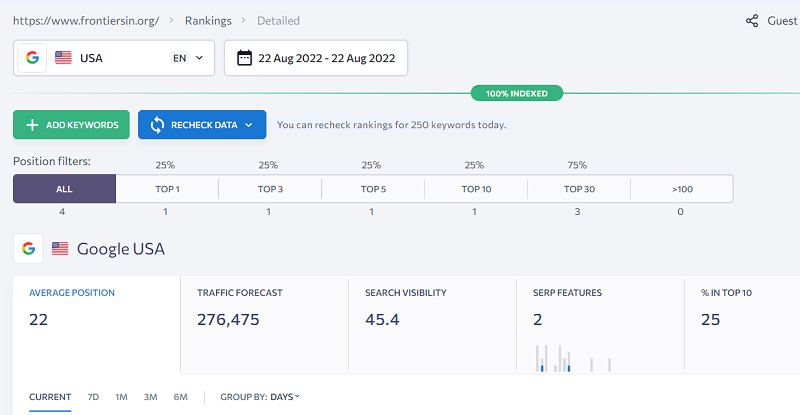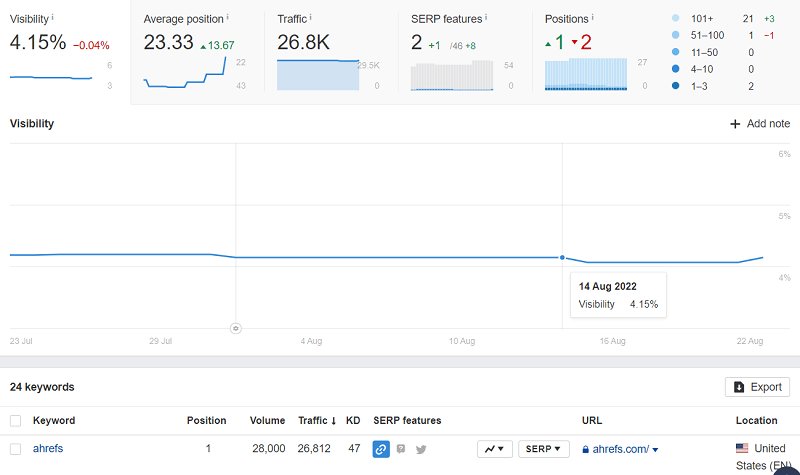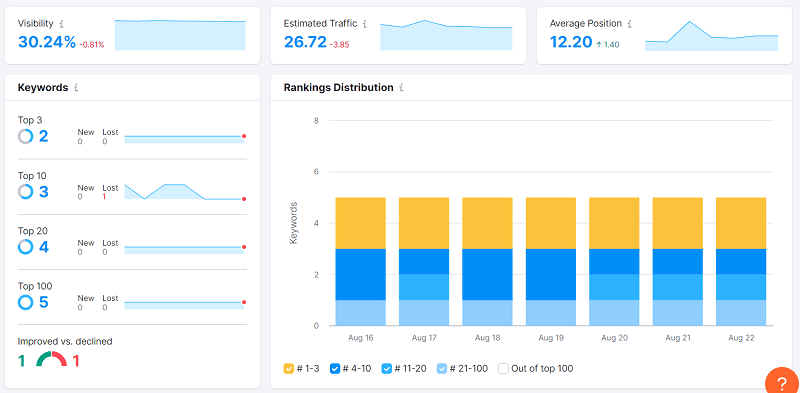Looking to land a new SEO role to grow your career? You may want to consider becoming an in-house SEO specialist.
Thanks to the Great Resignation, more jobs are available and plenty of companies are currently open to remote work gigs. There’s a significant demand for in-house SEO roles, with hundreds of openings advertised around the U.S. alone.
Now’s the ideal time to give it a shot as the demand is high, yet the bar is not too steep. You have the opportunity to improve your own “hireability,” and as a former long-term in-house SEO strategist, I have tips for you.
But first, why look in-house?
Why should you consider an in-house SEO role?
In-house SEO can be advantageous compared to working for small SEO agencies or as an independent consultant. Benefits include things like:
- Great pay (if you do in-house for larger companies or companies in lucrative verticals).
- A more regular work schedule.
- More robust group benefits such as insurance, sick leave, and 401K.
- Stability.
- Supportive teammates and infrastructure.
For instance, a larger company can call an IT person to fix your computer or internet access. In contrast, if you are independent, you may be doing everything ranging from accounting, IT, sales, and advertising to performing your HR functions, hardware upgrades, system admin work, and more.
My experience at doing SEO in-house for one of the world’s largest corporations and subsequently providing strategic guidance for other in-house teams has given me insights into how people may position themselves best for obtaining in-house SEO roles.
Below are 10 tips you can use to land that ideal position.
1. Determine your specialization
There are many aspects to SEO, and it can take considerable time to become a jack-of-all-trades in this arena. You should first look to leverage your existing skills and background.
If you come from computer science and programming, focus on learning:
- In-depth details about HTML code elements related to optimization.
- How structured data is designed within HTML.
- How content management system (CMS) templates may be optimized.
- How programmatic SEO is conducted.
You might also learn how to configure spidering software to perform audits on a website and how this can help review SEO elements across many of a website’s pages.
If your background is in writing, read up on:
- How to perform keyword research.
- How to find sources showing comparative data on keywords and phrase choices for particular topics.
- How content marketing can help attract more links and visitors and improve a website’s performance in search.
- If your background is in graphic design, learn how even attractively designed webpages may have code designed to be optimal without harming the graphic layout and styling of the site.
Those with a business analytics background should learn:
- How to use web analytics packages to assess websites’ performance in search results.
- How this performance data can indicate areas for potential improvement or reveal a site’s top-performing content.
You will use your specialization as a starting point and then work to expand your knowledge and skills to be more of a generalist in SEO later.
A specialization frequently helps you get your foot in the door with a company since those skills may match up with more available positions, albeit there have been increasing roles available as SEO specialists.
2. Learn the basics
This advice likely goes without saying, but all those interested in working in SEO should read up on the most influential and simplest ranking factors, and how to assess whether a website has them established.
Before writing this piece, I posted a poll on Twitter asking what one thing someone should do to prep to become an in-house SEO. The number one item that voted for was “Read Google’s Webmaster Guidelines and SEO Documentation.”
Google’s Webmaster Guidelines are general advice on what Google likes and dislikes. There’s also SEO documentation, including an SEO Starter Guide, that provides dependable, authoritative introductory instruction on SEO.
While it is easy to hyper-focus on the industry juggernaut, there’s value in reading Bing’s Webmaster Guidelines. Many SEO elements are parallel in Microsoft Bing, but there are differences.
According to my informal Twitter poll, SEO books were not a popular suggestion for learning the craft, but there are good ones out there that can help you learn SEO very well. Some of these SEO books can also be very helpful when researching issues that may come up outside the basics.
If you are a beginner, read a beginner’s guide – just not one marketed to “dummies” because you are not a dummy! Also, The Art of SEO is a great reference book, although I would not recommend it as a guide for beginning to learn the craft. The great thing about having books on your desk for reference can be a great resource to point to when someone does not believe you, and you need an authority to point to.
3. Learn HTML
Hypertext Markup Language, or HTML, is the formatting instruction protocol that tells browsers how to display webpage content.
A page’s HTML can be very complex and resembles programming code, so this may seem daunting. However, it is pretty easy.
You can view any webpages’ HTML code – often by right-clicking on the page in your browser window and selecting “View page source.” You can also view the code that composes the page by adding “View-source:” in front of the page’s URL in the browser address bar and clicking “Return” to view it.
You can learn HTML just by viewing code this way, but many webpages are so complex that this will prove frustrating.
You can also refer to online video tutorials on how to write HTML and guides and articles for learning the language.
Some of the best tutorials provide a “sandbox” area on the webpage for one to write HTML directly, which will immediately display the result. For instance, the Learn-HTML.org website provides instructions and sandbox areas to try out the code.
Once you have learned HTML, you might also learn further about CSS and JavaScript basics as they are closely intertwined in contemporary websites.
4. Create your own website and optimize it
Nothing beats hands-on experience, and this is ideal for learning both HTML and SEO. No matter your skill level, this should be an option open for you.
Make a website around your personal interest because it should be a topic that will inspire you to work on the site.
A personal website can also provide you with a safe space to experiment with different aspects of SEO, such as structured data, redirects, and image SEO.
When I hired code developers at Verizon, it was sometimes difficult to select between many qualified candidates.
But I found that those who had developed their own websites were typically an order of magnitude better for SEO and brought more real-world experience and skills to the table.
You do not have to hand-code HTML and CMS to launch your own website.
If you’re not as familiar with web coding, you could choose to go with a web host company that provides turnkey WordPress installations. You could also try Wix or other CMS.
If you have time and inclination, it is great to set up a few websites on a few different CMS platforms to gain skills and advanced understanding.
When you achieve rankings for key terms related to your topic, you could use your website as an example of your work.
5. Intern
Many agencies and top consultants may accept interns or apprentices in return for work. Take on such a gig to gain further experience and enhance your resume for landing a desired in-house SEO position.
Beware, however. There is a difference between cold-calling people or agencies you admire and applying for listed intern positions. Those of us operating agencies receive many cold-call offers from off-shore developers, lead-gen partners, and people offering to do work for us.
So, you will have to either focus only on applying for posted internship positions or go to extra effort to court an agency or independent consultant compellingly enough to break through all the noise.
Once you have an intern position, you may use it to step up into another role that helps build your job history into your dream in-house SEO role.
6. Campaign for a lateral move within an organization
It may be easier to initially get a position within a company for a non-SEO role, but you can then work to transition yourself into providing SEO analysis, guidance or development.
Discover who within the company are the decision makers who can approve SEO efforts or who may already be providing SEO guidance to an extent.
If there is already a primary in-house SEO person, you may be able to campaign to work with them as a team member, or you may be able to assist them from your existing position.
Often, the SEO role is shared in some way between the Marketing and IT departments. (In other places, it could even be in the Sales or Business Development departments.)
Individuals who carefully and sensitively position themselves to help facilitate SEO and can communicate its value proposition while exploring ways to make optimizations happen have an edge. They can have a role created specifically
7. Develop your soft skills
This tip likely needs to be my number one recommendation for in-house SEOs!
You would think that SEO cleverness might be the most beneficial skill for these roles – and, I think it should be considered second to soft skills.
But being diplomatic and communicating effectively and professionally will get you further along in your career than nearly anything else.
You may dream of ranting in an offended, dramatic tone when your system admin bans the pesky Googlebot and Bingbot, but you also may need that person to do you a favor later. Thus, embarrassing them in front of leadership will not win you a friend and ally.
As an in-house SEO, you not only need to be able to convey ROI advantages to your leadership, you will need to persuade others to collaborate with you and inspire everyone to work toward increasing qualified referral traffic.
When I was younger in my career, my mentors suggested improving my soft skills – picking up the phone more rather than attempting to direct and persuade through email.
They were right. I have also seen younger SEO professionals hamstring their career growth through too-blunt and unprofessional speech.
Even worse, others have tripped up in dealing with others because they did not understand the value of maintaining culturally sensitive communications in professional settings.
Consider bolstering your ability to do public speaking and writing well.
And, seriously, take sensitivity and diversity training courses online.
8. Stay up to date on SEO developments
One mark of professionals in the SEO industry is that we must all keep up with a rapidly evolving landscape. Read the top news emerging here on Search Engine Land and Search Engine Roundtable, as well as top articles in other publications.
You might also want to read the commentaries about new and emerging things written by top consultants in the industry.
Some articles posted on the major SEO tools’ websites are also very good quality – particularly the research studies that they conduct from time to time.
Search engines publish thousands of changes per year, so reading the articles posted each week on major websites can distill down the information to the most important for you to consume.
Make a consistent habit, and you will not fall behind or go stale.
9. Attend an SEO conference, meet-up and/or workshop
There are plenty of conferences, meet-ups, and workshops provided around the world. One upside of the pandemic era is that you can attend many of these from the comfort of your own home.
Frequently, these may be more beneficial to people who are a little more advanced than beginner-level. Regardless, they feature presentations by experienced people from whom you may learn a lot.
According to my informal poll, this was not one of the popular options for preparing for in-house roles, but that could be because conferences can be pricey.
If you have the budget to invest, do this for the sake of professional development. If you do not, look for free opportunities. Also, consider lower-cost options, such as attending regional search marketing association meetings.
Other in-person conferences may also allow you to attend sessions in return for working at the conference.
Larger conferences are often attended by many in-house SEOs looking to expand their knowledge. As such, those already working for a large company should campaign to get the company to pay their way to one or two conferences per year.
Having the company’s in-house SEO staff become more educated on the intricacies of optimization can pay off in dividends as the company’s website may rank higher and gain more qualified visitors.
10. Become Google Analytics certified
Understanding web analytics is a crucial skill for people in SEO.
Going through Google Analytics’s training program formalizes that understanding. It can help you evaluate your optimization work’s effectiveness and research what is bringing people to your site.
You should also become fully familiar with Google Search Console to see critical analytic information related to your organic search presence.
Certification also helps you appear serious as a professional in SEO, which is unquestionably beneficial for an in-house career.
Web analytics are undergoing a serious sea-change at the moment, unfortunately, with the transition from the traditional GA Universal Analytics to GA4. Some of the analytics may become a little dumbed-down from what it has been in the past. Consider familiarizing yourself with alternative analytics services out there.
One final, bonus tip
Do not let “imposter syndrome” hold you back, make you feel insecure about applying for SEO positions or make you too hesitant to campaign to attain the SEO role you desire.
While SEO has evolved over the past 20 years, it is also completely approachable, regardless of your degree of technical knowledge.
It is still the case that a simple webpage with a beautifully written article may outperform another webpage on the same topic that is technically optimized to the Nth degree.
You absolutely should endeavor to expand your own knowledge and skills, but you can do this without feeling reticent to assert yourself as a professional in the field.
There are short-sighted gatekeepers in SEO because it is a field that can attract people who want to create a territory for themselves without having to jump through a lot of formal hoops to do so.
That said, there is a lot of room for new participants to join in, and people don’t have to try to make it seem harder than necessary.
You do not have to be a hardcore programmer or have umpteen advanced degrees to do SEO.
You just need a desire to push for quality, informed by understanding what works well with the search engines.
The post 10 tips to help you become an in-house SEO appeared first on Search Engine Land.
from Search Engine Land https://ift.tt/TKvEGzn
via

